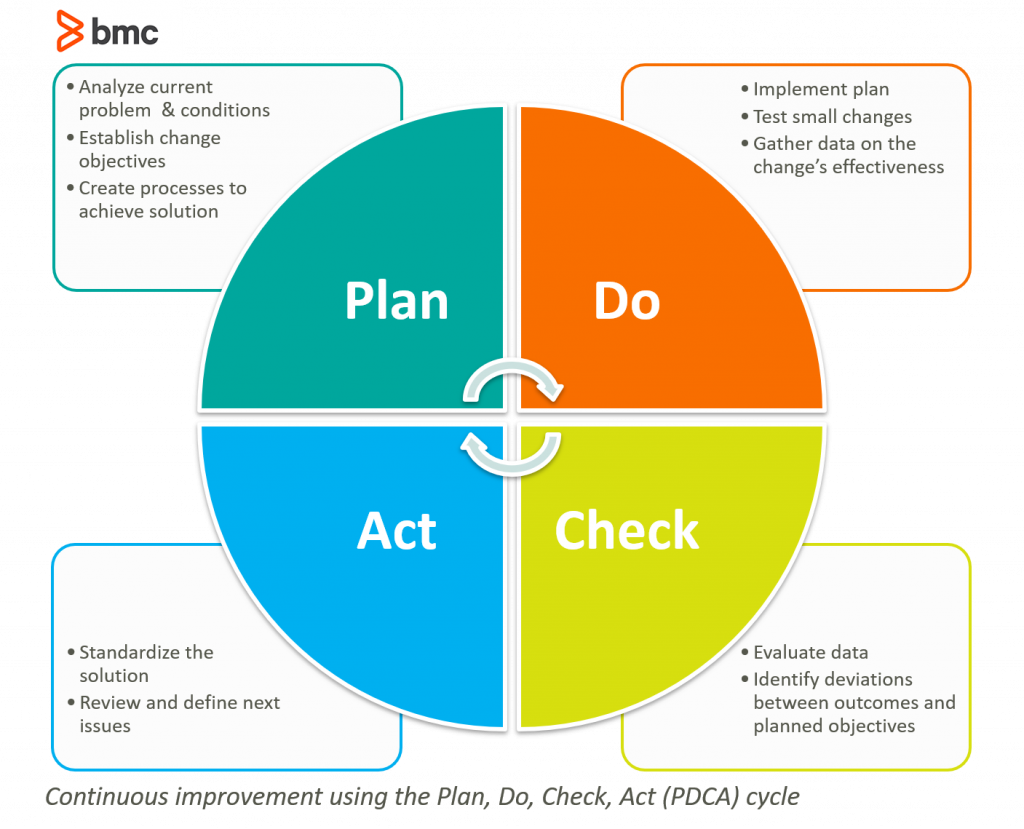The divide between IT and business is so culturally evident that it reads like a punchline to a workplace joke. The tech guys don’t understand what the business is doing, and the business folks think technology is just about turning PCs on and off again.
Of course, there is a divide between people who work in IT and those who work in traditionally defined business units. This divide was initially intentional, but as technology slowly then suddenly became a requirement for global and local businesses, this divide is now seen as naïve and a hindrance. Today, companies recognize the need to align IT and business: A recent Gartner report predicts that half of organizations worldwide will achieve increased IT-business collaboration by 2022. The problem, though, is that IT-business alignment isn’t easy to achieve.
In this article, we’ll look at IT-business alignment, including problems when IT and business units aren’t aligned, benefits of alignment, and even best practices and strategies to take your alignment from idea into action.
Business and IT: problems with the current state
Most companies can agree that business and IT aren’t working as closely as possible to optimize their service and product delivery. The oft-cited reason? Traditional business units function very differently from technology. Other reasons: Stereotypes perpetuate misconceptions about how business sees IT and vice versa. Non-IT personnel think IT is too technical to understand, and they might fail to recognize that IT participates in core revenue-generating activities like sales, marketing, customer service, etc.
Though these stereotypes are changing in the 21st century, different disciplines do have inherently different cultures, objectives, incentives, languages, and skillsets. It’s how writing makes sense to some people, and others are more comfortable working with numbers and spreadsheets.
Despite the elevation of roles like CTOs and CIOs, tech leadership continues to report significant struggles when attempting to collaborate with business units. You might easily recognize a problematic IT-business relationship. Indicators that these differences are hurting your company often show up in problems like:
- Under-performance and/or limited success
- Expensive investments with poor ROI
- Bottlenecks that hinder service delivery, perhaps via slow or buggy deployments
- Stumbling blocks (perhaps outright fighting) between processes and solutions
- Confused or lackluster customer service
- Poor communication and support for end users and potential customers
Every organization today must become a technology business, no matter what product or service you offer. This shift is inevitable, and with it comes the concept of IT-business alignment: that IT enables business and business drives IT efforts. Neither is less necessary; both are revenue-generating.
Defining “alignment” for IT and business
The concept of aligning IT and business is rooted in the longstanding reality that the tech side and the business folks were unable to bridge their knowledge, skills, and communication gaps to really work in tandem to support successful service delivery. Alignment might feel soft and squishy, like company culture—but IT experts say that’s the wrong approach to aligning IT and business. So, how should we be thinking about alignment?
Think about quantifying what business and IT bring the company—when they work alone and when they work together. The lynchpin is the understanding that when IT and business work in tandem, as partners, both will achieve more. The most successful organization create a unified team, using the best of all available skills and resources so that each employee gets to work smarter. And every customer gets a better experience.
Benefits of aligning IT and business
Aligning IT and business results in countless benefits:
- Reduce IT expenses (at least 10% of IT spending does not benefit business goals)
- Increase collaboration
- Gain visibility into problem areas
- Improve ROI by fine-tuning investments
- Speed up time-to-market
- Synchronize all units to become agile
- Upskill your industry and employee knowledge
- Achieve your strategy
- Make smarter decisions in every area: infrastructure design, application lifecycles, planning and budgeting, marketing and sales, outsourcing, staffing, partnerships and vendors, etc.
All these benefits result in top customer experiences, boosting your bottom line.
Achieving IT-business alignment: best practices
Talking about alignment and achieving it are two separate things. Achieving true IT-business alignment is difficult primarily because it’s cultural. Culture changes might seem easy—hang up value-based posters, encourage department meet-and-greets—but those efforts rarely succeed.
Instead, achieving alignment requires strategy. And that strategy should be an iterative process: define one change, put it in place, watch it perform, and decide whether to tweak it. Consider the Plan-Do-Check-Act cycle to implementing change.

To align IT and business, consider these best practices:
- Change your thinking, change your doing. Most companies are siloed, so marketing experts rarely work with IT, and both teams rarely see how sales talks with customers. Instead, think of all your business units, including tech, in a continuous, strategic loop. Changing your thinking means teams begin to understand other teams, so they can function better: increasing efficiency, reducing risk.
- View IT as an instrument for business transformation. If you’re asking how IT can support others business units like sales, product development, and marketing, you’re still following a siloed approach. Instead, add IT to those other business units: each one is equally capable of transforming the business. Integrate teams to combine business units. Explore revenue streams that IT itself can directly impact.
- Make the customer experience the #1 factor. Every single business unit, person, and task should be working to improve the customer experience. Aligning everyone under common language and goals that directly support the customer makes it easier to break down traditional discipline silos. Sales talks directly to customers, of course, but so do marketers and product developers. Make sure your tech teams also focus directly on the customer.
- Use a single language. Every industry and every company has its own lingo. While business units understand other BUs and tech-minded personnel get other tech minds, separate languages tend to keep them separate. Help demystify what every team does: start by standardizing your company language across all teams.
- Be equally transparent to all departments. Continuing the theme of unnecessary mysteries, executive and management decisions should be transparent (as much as possible). What are good investments the company is making? What investments panned out poorly? A good way to know if one or several teams don’t have this clarity is to see whether they agree with or understand a recent managerial or executive decision. If it seems like the CTO simply trusted his gut or your manager played favorites, that’s a big clue that you’re not being as transparent as your staff needs.
- Rotate IT and business employees to encourage understanding. A simple in-house mentorship program supports IT and business employees in bridging the IT-business gap. Put a salesperson in with a dev team, and sit a help desk agent with the marketing team for a few weeks—the cross-cultural learning will result in better understanding that will close the gap. Those inter-discipline relationships also broaden thinking, resulting in innovation.
- Promote a vibrant, inclusive culture. Company culture isn’t the single key to achieving alignment, but it’s one component. Stop holding sales-only happy hours or ordering late-night pizza parties for only the help desk. Instead, promote inter-department exchange formally and informally. Schedule conversational events and speaking series. Use company money to encourage cross-functional meetings. Do this on a 1:1 level, buying lunch or coffee when an IT person and a business professional go out together, or offer extra budget dollars to do this on a team level.
- Understand change in humans. Take some time to learn how humans accept change, and then look at change management processes that might inform what works for people—and what doesn’t.
- Create an alignment plan. Before embarking ad-hoc on your alignment journey, consider some frameworks for turning your alignment efforts into an actionable strategy:
- The Zachman Framework shows how one complex idea can be translated to different people for different purposes.
- Organizational Change Management (OCM) offers a way to re-organize your IT depending on your purpose—which, in our case, is to better align IT and business.
Is alignment enough, or do we need convergence?
One school of thought questions whether IT-business alignment is enough. Taken at face value, alignment could mean that the two entities stay separate but work in tandem. Another concept—convergence—suggests that the teams move towards an actual union.
By converging or integrating, IT and business units meld together. That could look like a company with individual teams comprised with expects from each business unit: IT, sales, marketing, and product development. It could look like Agile and DevOps principles applied wholly to your organization.
One way to close the gap is with specialized business relationship managers (BRMs) that help translate tactfully among different groups to develop and nurture relationships. Think of these staff as ambassadors or diplomats, understanding each skillset or team’s philosophy and helping everyone who works with them get a peek inside to foster better relationships for everyone.
BMC solutions for IT-business alignment
Whether you subscribe to alignment or wholesale convergence, learning and understanding company needs and the needs of your employees is the first step. Then, you’ll need to empower your company with next-level tools for next-level success. BMC offers full solutions and innovations for the ultimate customer experience. Wherever your IT-business alignment takes you—from service and operations management to automation to the mainframe—BMC has you covered.
These postings are my own and do not necessarily represent BMC's position, strategies, or opinion.
See an error or have a suggestion? Please let us know by emailing blogs@bmc.com.






